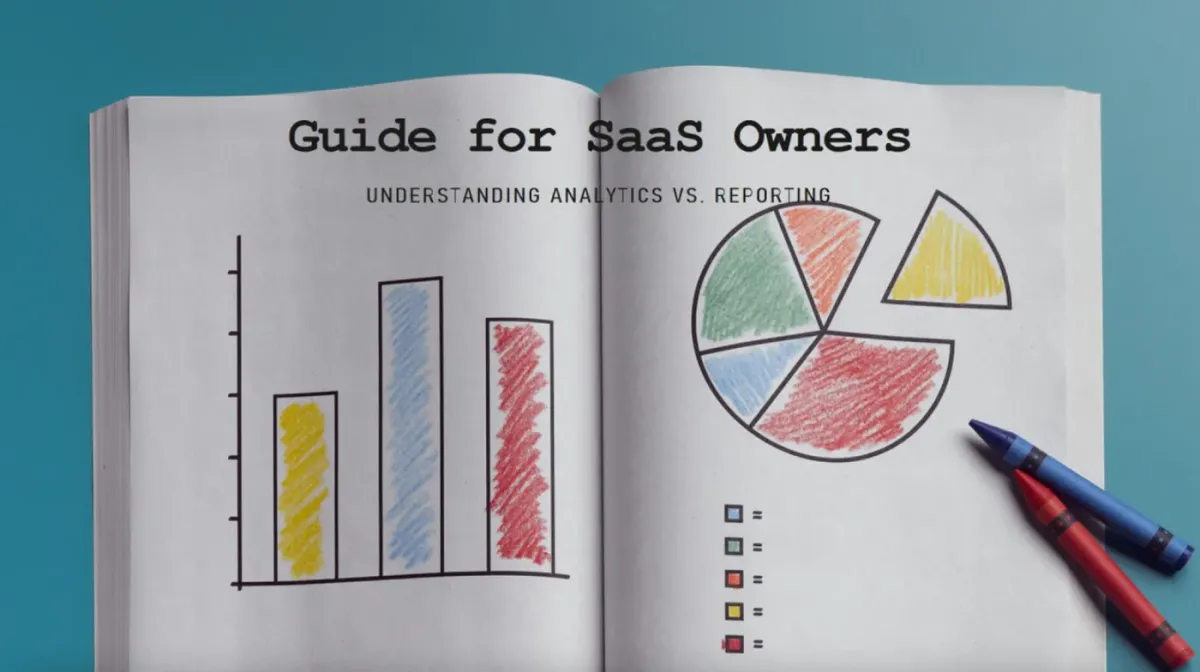Understanding Analytics vs. Reporting: Ready to Stand Out? A Guide for SaaS Owners!

In the ever-evolving landscape of Software as a Service (SaaS), the terms “analytics” and “reporting” are often used interchangeably, leading to misconceptions about their true capabilities and potential impact on business growth. However, understanding the crucial distinction between analytics and reporting can be the key to unlocking a whole new realm of possibilities for SaaS builders, enabling them to transform their offerings from mere tools to powerful differentiators in the market.
Here are some shortcoming characteristics of predefined reporting in SaaS
- Predefined Templates/Dashboards: SaaS users often rely on preset reporting dashboard templates tailored to meet standard reporting needs.
- Missing Granularity: These predefined templates may oversimplify intricate data sets, potentially sacrificing depth and granularity in analysis.
- Limited Interactivity: SaaS reporting traditionally provides restricted interactivity. While users may filter or drill down into specific data elements, the fundamental structure and content of reports remain fixed.
- Common Metrics: Reports typically emphasise commonly used metrics relevant to all segments of SaaS product users, which often makes it more of general purpose reporting.
- Limited Visualization: The visualization capabilities of SaaS reporting tools could be limited, hindering effective data communication.
- Difficulty in Adapting to Changes: As reporting needs evolve over time, predefined templates may become outdated or less relevant. Users may find it challenging to adapt existing templates to accommodate new reporting requirements or changes in the underlying data structure.
How does advanced analytics outshine traditional templated reporting?
- Tailored Insights: Customizable analytics allow SaaS users to tailor reports and dashboards to their specific needs, providing insights that are directly relevant to their business goals and workflows. This customization enables users to focus on the metrics that matter most to them, leading to more informed decision-making.
- Flexibility: With customizable analytics, users have the flexibility to create, modify, and combine different visualizations and data sources according to their requirements. This adaptability ensures that the analytics solution can evolve alongside the business, accommodating changes in strategies, objectives, and market conditions.
- Deeper Analysis: Customizable analytics empower users to perform deeper analysis by drilling down into specific data points, exploring correlations, and uncovering patterns that might not be apparent with traditional reporting methods. This depth of analysis can reveal valuable insights and opportunities for optimization or innovation.
- Enhanced User Experience: By providing users with the ability to customize their analytics experience, SaaS providers can deliver a more personalized and intuitive user interface. This enhanced user experience fosters engagement, increases adoption rates, and ultimately improves the overall value proposition of the product.
- Competitive Advantage: By leveraging customizable analytics to gain unique insights and optimize operations, businesses can gain a competitive edge in their industry. The ability to extract actionable intelligence from data can drive innovation, improve customer satisfaction, and ultimately lead to better business outcomes.
In conclusion, the transition from traditional templated reporting to advanced analytics represents a pivotal step for SaaS builders and users alike. By embracing the power of customizable analytics, businesses can unlock new realms of possibilities, driving growth, innovation, and competitive differentiation in an increasingly dynamic landscape.
We help SaaS businesses on reporting dashboard using Gen AI.
